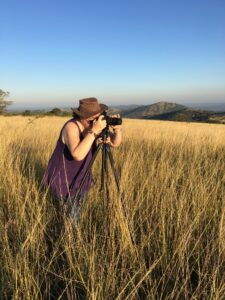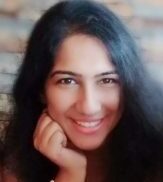Simulated Entropy
Ava Carter’s coffee mug was no match for the morning. Stained and steaming with cheap brew, it sat beside an open copy of My Big TOE: A Theory of Everything by Thomas Campbell, its pages dog-eared and scrawled with notes. Ava tilted her head, trying to make sense of the latest chapter. At 51, her return to university was not what she’d call a midlife crisis; it was more like a midlife dare.
Her journalism professor, a wiry man with an unkempt beard and an intimidating passion for big ideas, had given the class their final assignment: “Investigate something that could change the way we understand our world.” While the kids in her class scrambled for topics like AI ethics or climate change, Ava, with her signature mix of sarcasm and stubborn curiosity, chose simulation theory. Because why not? If she had to argue reality, she’d start with the possibility that it didn’t even exist.
“Campbell,” she muttered, flipping to another page filled with diagrams of virtual realities. “You’re either a genius or the reason I’m losing sleep.” She took a sip of coffee and stared at her laptop screen, where her notes were compiled. The title of her project, Simulated Entropy: The Case for a Virtual Universe, blinked cursor-like at her, waiting for brilliance. Or a distraction.
Her quest wasn’t just academic. Ava’s life had been a series of calculated risks: moving across countries, leaving a marriage, starting anew. But as she unraveled Campbell’s theory that reality was a consciousness-driven simulation, she couldn’t help but draw parallels to her own life. Maybe, she thought, rebooting at 51 was her way of rewriting the code.
The First Clue
Her research led her to a physicist-slash-programmer named Dr. Marcus Lee, who worked at a think tank that dabbled in quantum computing. When Ava first called him, she introduced herself with her usual charm:
“I’m Ava Carter, UBC journalism student. I’m writing about simulation theory. Got time for a chat, or are you too busy coding us into another dimension?”
Dr. Lee chuckled but agreed to meet. A week later, Ava sat across from him, notebook in hand, feigning nonchalance as he explained quantum particles behaving as though they “knew” they were being observed.
“It’s like the universe is rendering itself based on need,” he said, his eyes lighting up. “Think about it: what if reality only exists when you’re looking at it?”
Ava couldn’t resist. “So, the universe is lazy? Sounds relatable.”
The Breaking Point
Her breakthrough came late one night, pouring over data from quantum experiments. Dr. Lee had shared a peculiar paper about anomalies in random number generators—spikes in patterns during major world events, as if the fabric of reality itself was reacting to collective human consciousness. Ava’s pulse quickened.
“So, if enough people believe something, the universe listens?” She sat back, the implications flooding her mind. If this was true, reality wasn’t fixed; it was an agreement, shaped by thoughts, beliefs, and collective will.
She glanced at her laptop, Campbell’s words echoing in her head: “Consciousness is the programmer; reality is the code.” It wasn’t just theory anymore. Ava felt it, an invisible thread pulling her toward a conclusion that could change how she viewed everything. Or maybe, she thought with a grin, she was just too far down the rabbit hole.
The Submission
When she submitted her project, Ava felt a weight lift off her chest—and promptly replace itself with new doubts. Her professor’s rubric haunted her: Research depth, originality, societal impact. Her grade would decide whether she earned the coveted six-month, paid internship at Oxford.
“90 or above,” she whispered, staring at the submit button. “That’s all I need. No pressure, right?”
As she hit send, Ava leaned back in her chair, glancing at the worn copy of My Big TOE. If nothing else, she thought, Campbell had taught her this much: reality might be simulated, but what she chose to do with it? That was entirely up to her.
And somewhere, in some corner of her universe, a voice whispered back: “Welcome to the next level.”






